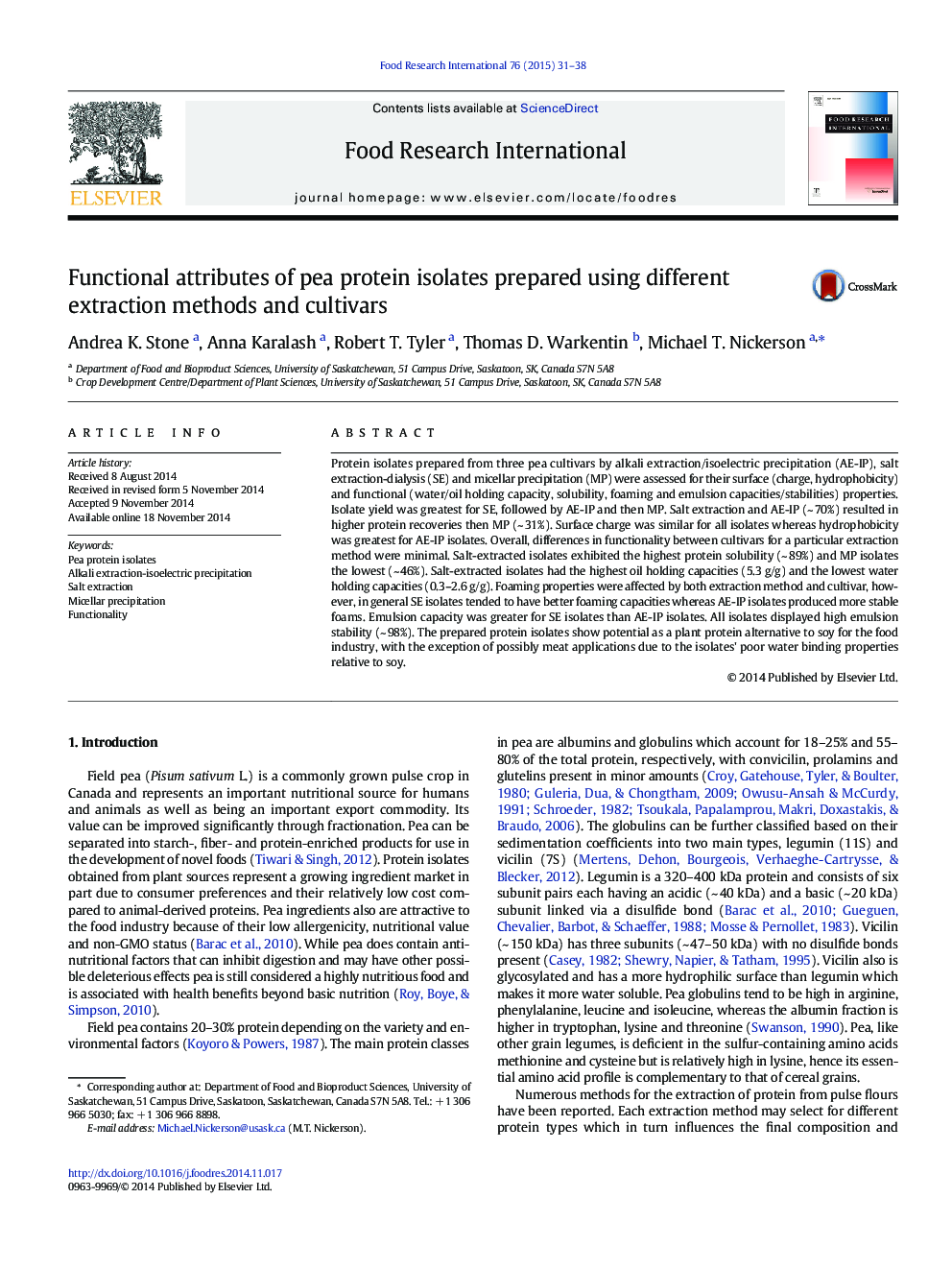| Article ID | Journal | Published Year | Pages | File Type |
|---|---|---|---|---|
| 4561510 | Food Research International | 2015 | 8 Pages |
•Protein isolates were produced from pea using different extraction methods.•Extraction method impacted protein functionality.•Salt extracted isolates had good solubility and emulsion and foaming properties.•Pea protein represents a viable alternative to soy protein.
Protein isolates prepared from three pea cultivars by alkali extraction/isoelectric precipitation (AE-IP), salt extraction-dialysis (SE) and micellar precipitation (MP) were assessed for their surface (charge, hydrophobicity) and functional (water/oil holding capacity, solubility, foaming and emulsion capacities/stabilities) properties. Isolate yield was greatest for SE, followed by AE-IP and then MP. Salt extraction and AE-IP (~ 70%) resulted in higher protein recoveries then MP (~ 31%). Surface charge was similar for all isolates whereas hydrophobicity was greatest for AE-IP isolates. Overall, differences in functionality between cultivars for a particular extraction method were minimal. Salt-extracted isolates exhibited the highest protein solubility (~ 89%) and MP isolates the lowest (~ 46%). Salt-extracted isolates had the highest oil holding capacities (5.3 g/g) and the lowest water holding capacities (0.3–2.6 g/g). Foaming properties were affected by both extraction method and cultivar, however, in general SE isolates tended to have better foaming capacities whereas AE-IP isolates produced more stable foams. Emulsion capacity was greater for SE isolates than AE-IP isolates. All isolates displayed high emulsion stability (~ 98%). The prepared protein isolates show potential as a plant protein alternative to soy for the food industry, with the exception of possibly meat applications due to the isolates' poor water binding properties relative to soy.
